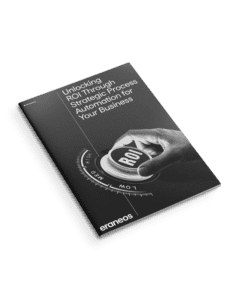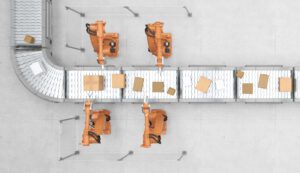Organizational resilience is an important attribute for companies seeking to differentiate themselves from their competitors in a volatile business world. At Eraneos, we have studied the common characteristics of resilient companies. Based on our observations, research and analysis, we have developed a model for organizational resilience in collaboration with Critical Future, London.
Amazon a head start through innovative services and reinvention
An impressive example of entrepreneurial resilience is Amazon, which originally started as a bookseller. The company has continuously reinvented itself. Today, Amazon is not only a leading e-commerce giant, but also a leading provider of cloud computing services.
How did Amazon achieve this goal? The Center for Effective Organizations (CEO) in the U.S. conducted a study that found that in every industry, there are a few large companies that outperform their competitors over time. These companies excel in their ability to,
- anticipate events,
- solve problems faster than their competitors, and
- successfully implement change.
Even if their competitive environment changes significantly, they retain their performance edge.
Financial performance determines whether a company remains resilient during a recession
Another Harvard Business Review study examined the performance of 4,700 companies during various recessionary periods. The researchers divided the organizations into four groups according to their financial performance:
- Prevention-oriented companies have reduced their spending more than their competitors.
- The advertising-oriented companies have significantly increased their spending compared to their competitors.
- The pragmatic firms have supported prevention more by reducing production costs or by reducing staff.
- The progressive organizations have not reduced their production costs as much. They have allocated additional resources.
Core of the model for resilience: defensive and offensive measures
Firms perform well after a recession when they manage the balancing act between cutting costs to ensure survival and investing to promote growth. In this group, companies are most likely (37 percent) to outperform their competitors if they take a combination of defensive and offensive measures. By selectively cutting costs, they focus more strongly than their competitors on operational efficiency. At the same time, they invest relatively heavily in the future by spending money on marketing, research and development, and new equipment. This multi-pronged strategy is the best antidote to a recession.
Based on these findings, we have developed a model together with Critical Future, London, for organizational resilience. This model supports companies in strengthening their resilience and achieving long-term success. The structure of the model consists of the following elements:
1. Vigilant Realism
2. Multidimensionality
3. Continuous reinvention
4. Setting meaningful goals
5. Entrepreneurial Leadership
6. Strategic Vision
This combination of defensive and offensive strategies is at the core of our organizational resilience model.
Fill the form to download our Booklet “The 6 Elements of Organizational Resilience” .

Kirsten Buffo de Jong
Partner
Logistics | Retail & Consumer Goods | Manufacturing




